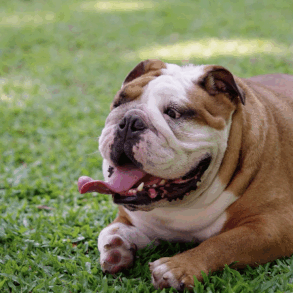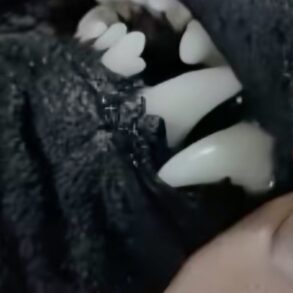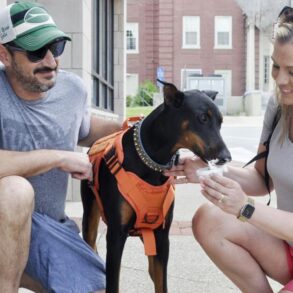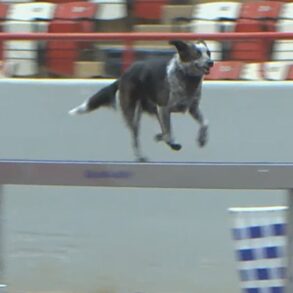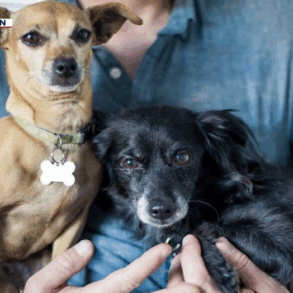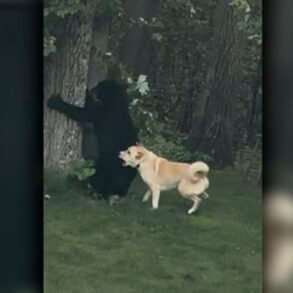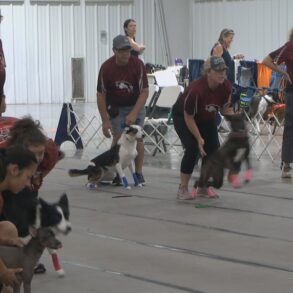Tail wagging is a familiar and endearing dog behavior and is often interpreted as a sign of happiness or friendliness. However, Giulia Cimarelli, who studies canine communication at the University of Veterinary Medicine Vienna, pointed out, “This behavior as a whole is communicative…but one needs to look at the details to interpret it and really understand it.” Despite ongoing research, the reasons behind tail wagging remain a bit of a ruff mystery.

Giulia Cimarelli studies social behavior of canines at the Domestication Lab of the University of Veterinary Medicine Vienna.
Thomas Suchanek
Some researchers believe the nature of tail wagging might indicate different things. A dog’s tail is an extension of its spine and is likely controlled by the cerebellum, which governs motor functions through subtle variations in position and speed. Studies suggest brain lateralization in dogs, with rightward tail wagging in response to positive stimuli, like seeing their owner, and leftward wagging for negative stimuli, such as encountering an unfamiliar dog or aggressive situation.1 Arousal-related hormones and neurotransmitters can also influence a dog’s emotional state.2
Another, and more common, theory is that tail wagging may have emerged as a by-product during domestication, with selection for friendliness shaping tail behavior. One study found that, despite identical upbringing, dog pups showed more communicative behaviors, such as tail wagging, than wolf pups.3 Wolf pups exhibited more aggressive behavior, even toward familiar faces. However, Cimarelli and her colleagues also suggest a new hypothesis in which humans might have directly selected for this ubiquitous behavior, as the human brain is drawn to rhythmic stimuli like tail wagging.2
While this behavior may vary among breeds and dogs with docked tails, Cimarelli hopes that advanced noninvasive imaging and tracking tools will help doggedly determined researchers decode the nuances of tail wagging.
What makes you curious? Submit a question for us to answer in future “Just Curious” columns.
This post was originally published on this site be sure to check out more of their content.
























